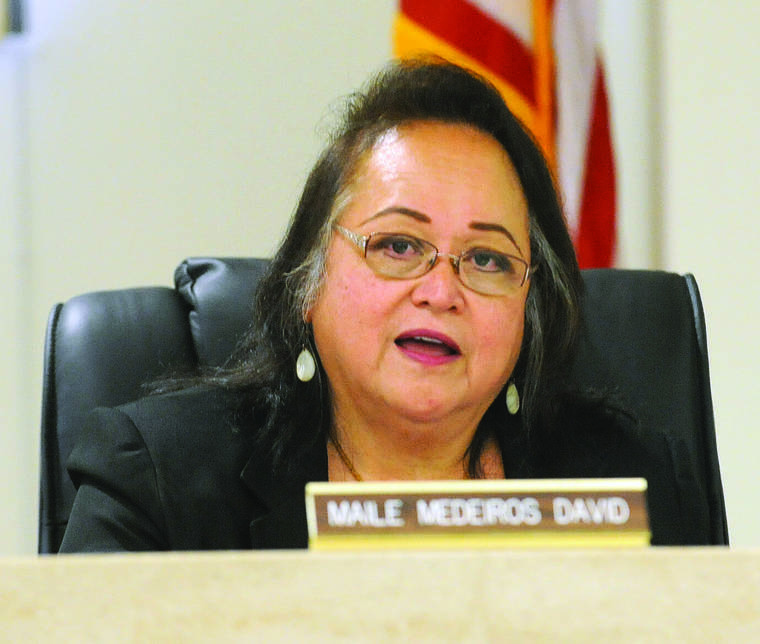Council parses Kona CDP changes

Whats in a word? Plenty, it seems, when it comes to the difference between shall and should.
What’s in a word? Plenty, it seems, when it comes to the difference between “shall” and “should.”
At the request of South Kona/Ka‘u Councilwoman Maile David, the County Council agreed Wednesday to consider an amendment to the Kona Community Development Plan that would make mandatory a section that now reads as a recommendation. The council postponed the measure on final reading, with the amendment left hanging, until Sept. 4.
ADVERTISING
“We can come back with a better vision of what this amendment will entail,” David said.
At issue is a clause listing a number of natural and cultural resources that must be inventoried as part of any permit application with the Planning Department because, “in the context of Kona’s ecology and history … (they) shall be considered sensitive and therefore shall be inventoried.”
The section includes critical habitat, native ecosystems, anchialine ponds, high-level groundwater recharge area, historic trails, archaeological and historic sites and enhanced shoreline setbacks.
David wants to change “should” to “shall” in this sentence: “Any permit application that encompasses any of the above resources should incorporate these resources as assets.”
The language goes on to state: “If a proposed project will have significant, unavoidable, adverse impacts to any of the above resources, the presumption shall be denial of the application and the applicant will have the burden of explaining any overriding considerations.”
The changes in Bill 87 are in response to a 2017 ruling by the Intermediate Court of Appeals that upheld the CDP as law. A Kona couple, Patricia and Richard Missler, sued after the county maintained that the 72-acre Waikakuu Ranch planned unit development was not subject to the CDP.
Questioned why her proposed change is coming so late in the process, David said she only became aware that the word “should” remained in the current draft of the 89-page bill after reading through it following the last council meeting. She asked the measure be postponed so that the administration, the other council members and the public could review it.
“I found out after the meeting that changes were made,” David said.
Michael Matsukawa, an attorney who’s been active in the Kona CDP process for the 14 years since its inception, told the council in testimony that the county charter, the fundamental governing document, uses the word “shall” in regard to environmental and cultural protections.
Section 13-29 of the charter, approved by voters in 2010, states,”For the benefit of present and future generations, the county shall conserve and protect Hawaii’s natural beauty and all natural and cultural resources, including but not limited to land, water, air, minerals, energy sources, wahi pana, surf spots, historic sites, and historic structures, and shall promote the development and utilization of these resources in a manner consistent with their conservation and in furtherance of the self-sufficiency of the county.”
Matsukawa said it’s an important distinction.
“It should be restored back to ‘shall’ because that’s the language in the charter,” he said.
Two other testifiers deeply involved in the CDP process supported the draft as it stands without David’s proposed change.
Shirley David, vice chairwoman of the CDP Action Committee, described the almost two years the residents have worked on the changes to the plan. Ken Melrose, who chaired the CDP steering committee in 2008, agreed.
“We support the plan as it is right now,” Shirley David said.
Council members agreed to take another look. But Council Chairman Aaron Chung, a Hilo attorney, said “at first blush” it seems to make sense to align the CDP language with that in the charter. But the two are documents with separate purposes, he said.
“It opens up these applications to attack later on,” Chung said, “and that seems unfair to applicants in my opinion.”
Email Nancy Cook Lauer at ncook-lauer@westhawaiitoday.com.


